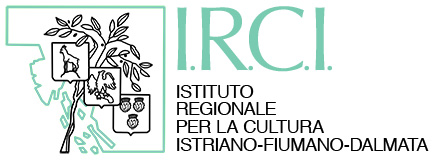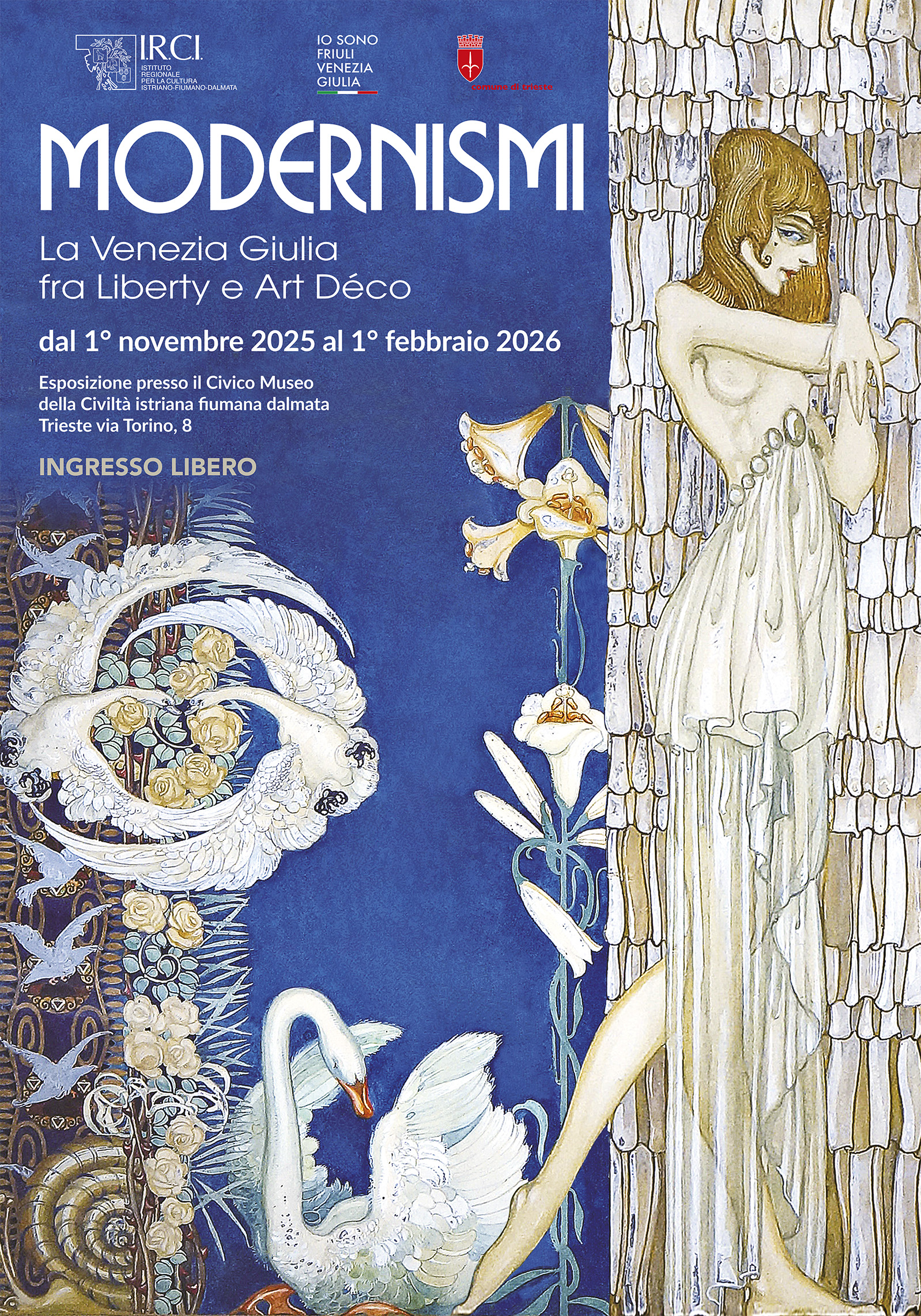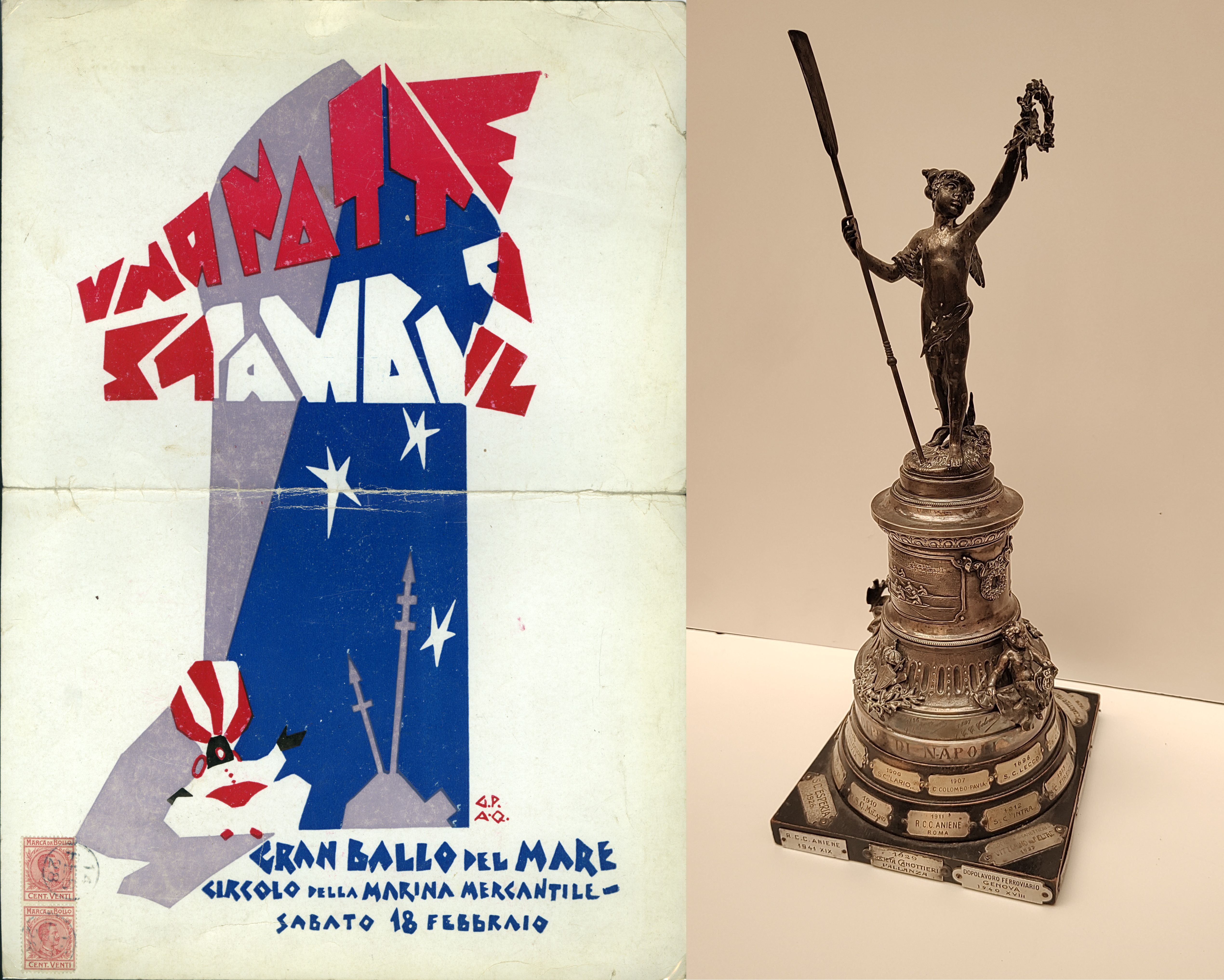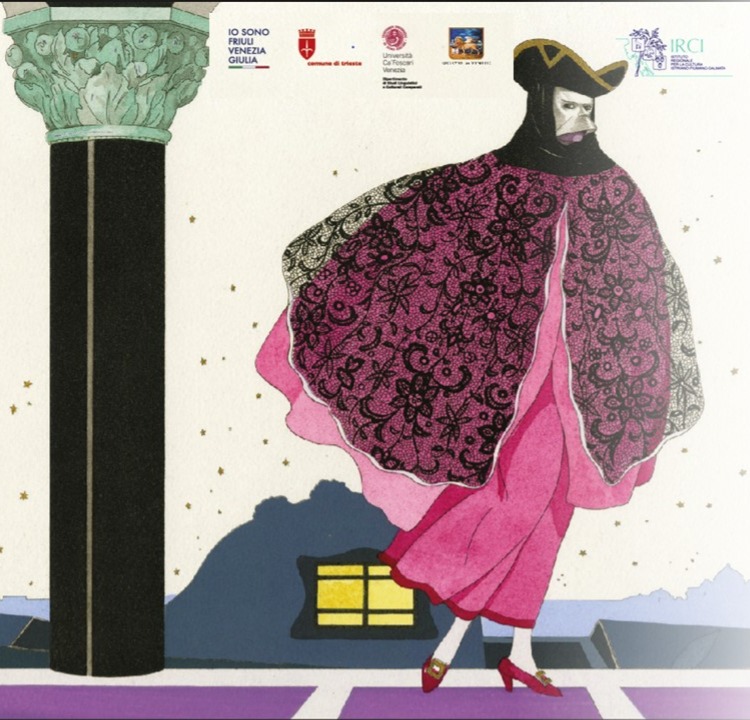Venerdì, 31 ottobre alle ore 17.30, nelle sale espositive del piano terra del Museo istriano, in via Torino 8, a Trieste, l’I.R.C.I., Istituto Regionale per la Cultura Istriano-fiumano-dalmata, ha inaugurato la nuova mostra.
Questa mostra è un tentativo di uno sguardo d’insieme nell’arte - meglio dire: nelle arti – della Venezia Giulia, con l’occhio rivolto anche a Fiume e alla Dalmazia dall’inizio del Novecento sino agli anni Trenta del secolo trascorso. Una visione a 360 gradi fra architettura, scultura, decorazione, pittura, illustrazione, arti applicate, artigianato, “costume”, cercando il tempo, l’artista e l’opera e andando ad incontrare sì chi nacque, visse e creò in quest’area, ma anche chi trovò fortuna altrove e qui non sarebbe più tornato e per la Venezia Giulia non avrebbe mai, o quasi, dato. Ancora: in mostra vediamo anche altre realtà e altri geni, di altri luoghi, che produssero per la nostra terra. E un ultimo spunto: la Venezia Giulia vivrà i tempi fra il Liberty e il Déco celando e scoprendo dietro le occhiaie liberty dei palazzi, oltre quei muri che poi si squadreranno più secchi quando il decoro floreale lascerà spazio alle semplificazioni, mille sorprese nell’arredo e nell’oggetto che fa bella la casa. Porcellane, ceramiche, bronzi, vasi, vetri, pannelli che in trenta/quarant’anni ci mostreranno quanto questa terra sia stata capace di accogliere ed apprezzare il meglio che il mercato poteva offrire. A Trieste, ma anche a Pola, a Fiume, a Gorizia, non sarà difficile ritrovare oggetti di grandi firme, il servizio di bicchieri che esce dal disegno di Hoffmann, il piatto della Wiener Werkstätte, la donnina in bronzo di Chiparus, il vaso di Gallé o la ciotola di Lalique. Fino a scoprire che anche in case non ricchissime poteva trovare spazio una ceramica della Lenci, una testa femminile inventata da Sandro Vacchetti, una piastrella di Gio Ponti, un pochoir di Brunelleschi o un bucchero, se non un bronzo, di Cambellotti. Anche questa sarà la Venezia Giulia fra Liberty e Déco, quella che in questa rassegna cercheremo di mostrare.
Liberty. Alzi gli occhi, giri per Trieste, trovi facciate, strutture, decorazioni, portoni e portali. A Fiume la stessa cosa. Architetti, alcuni grandi, una manciata grandissimi, alcuni assai poco noti. Pure l’impronta secessionista, il colpo di frusta da japonisme o la razionalizzazione di cerchi e linee rette da Wiener Werkstätte, offrono toni e colpi da maestro. Decoratori, gli uomini che servono per condire la scena delle scelte dell’architetto, se non scultori per dare un profumo ancora più forte. Fiori stilizzati, la rosa di Mackintosh, ripresa e perpetuata sulle facciate delle case.
Déco. Nelle cose, più che nelle case. A volte, sulle case; sicuramente, dentro le case.
Scultura. Da Ruggero Rovan sino a Ivan Rendić, poi Giovanni Marin che liberteggia e, dopo un attimo, Attilio Selva. Poi c’è Franco Atschko-Asco, ci sono i suoi allievi, si trasfigura: Déco? Qui il pensiero va verso due scultori giovanissimi, Marcello Mascherini e Ugo Carà.
Naturalmente, pittura e illustrazione poiché sovente il pittore è anche illustratore. E viceversa. Nella Venezia Giulia individuare un pittore che sia squisitamente liberty oppure definibile déco non è cosa facile. Rudolf Kalvach, viennese/triestino, cos’è? Come definire, dove inserire le xilografie del porto di Trieste? Ma, poi, nella sua esperienza alla Wiener Werkstätte, quelle cartoline con gli esseri grotteschi, in colori forti e, soprattutto, netti sono Secessione?
Argio Orell, con studi monacensi, allievo di von Stuck, può essere inserito nella dimensione secessionista, per un periodo e per parte della sua produzione. Così Vito Timmel, che fu a Vienna e avrebbe voluto essere, senza riuscirsi, allievo di Klimt. E di chiara e squisita ispirazione klimtiana restano alcune sue opere superbe. Poi, però, tanto quanto Orell, in pittura, si avvicinerà ai canoni novecentisti, altrimenti i modi di Timmel potranno essere inseriti in una dimensione déco, anche qui, però, per un periodo e per parte della sua produzione. Liberty, senz’altro, sarà il poco noto, eppure formidabile, allievo di Orell, Umberto Schiavon, che ci ha lasciato alcune opere di rara efficacia e di eccelsa capacità decorativa. Egli esemplificherà in maniera suggestiva il passaggio dal Liberty al Déco.
Déco: il più genuino esempio nostro è Mariella Polli, in arte Popi. “Figurinista” la Popi, negli anni Trenta, interpretò l’Art Déco con uno stile da farsi rivale a Gio Ponti e le sue donnine, le deliziosamente frivole cocotte, i profili che nulla hanno da invidiare agli Accornero, i colori pastello e l’uso dell’argento e della porporina, ne fecero la perfetta interprete del momento.
Forse tutto questo lo avremmo potuto trovare ovunque. Ma la nostra è stata terra di passaggio, con un mare grande, con navi che imbarcavano e sbarcavano, terra di incontro di gente e di gusti, di nuovo ed antico. Sì, fra il nascere del Novecento e gli anni Trenta, pur con una guerra grande in mezzo e una che sarebbe arrivata a rivoltare il mondo, l’arte, anche nelle piccole cose, l’arte, anche nel quotidiano, sarebbe arrivata da ogni dove, a portare opere grandi e minime, a mostrare segni. Fra Liberty e Déco. E questi che vedrete sono solo piccoli spunti.
La mostra, con ricco catalogo, resterà aperta fino al 1° febbraio 2026, ogni giorno con il seguente orario: 10.30-12.30 e 16.30-18.30. INGRESSO LIBERO
On Friday, 31 October at 5.30 pm, in the exhibition rooms on the ground floor of the Istrian Museum, in via Torino 8, in Trieste, IRCI, the Istrian-Fiume-Dalmatian Regional Institute for Culture, inaugurated the new exhibition.
This exhibition is an attempt at an overall look at the art - better said: in the arts – of Venezia Giulia, with an eye also turned to Fiume and Dalmatia from the beginning of the twentieth century until the 1930s. A 360-degree vision between architecture, sculpture, decoration, painting, illustration, applied arts, craftsmanship, “customs”, seeking time, the artist and the work and going to meet those who were born, lived and created in this area, but also those who found fortune elsewhere and would never return here and would never, or almost never, give for Venezia Giulia. Again: on display we also see other realities and other geniuses, from other places, who produced for our land. And one last idea: Venezia Giulia will experience the times between Liberty and Deco by hiding and discovering behind the Art Nouveau dark circles of the buildings, beyond those walls that will then become drier when the floral decoration leaves room for simplifications, a thousand surprises in the furnishings and in the object that makes the house beautiful. Porcelain, ceramics, bronzes, vases, glass, panels that in thirty/forty years will show us how much this land has been able to welcome and appreciate the best that the market could offer. In Trieste, but also in Pula, in Fiume, in Gorizia, it will not be difficult to find objects from big names, the set of glasses that comes from Hoffmann's design, the plate from the Wiener Werkstätte, the bronze woman from Chiparus, the vase from Gallé or Lalique's bowl. Until he discovered that even in not very rich houses there could be space for a Lenci ceramic, a female head invented by Sandro Vacchetti, a tile by Gio Ponti, a pochoir by Brunelleschi or a bucchero, if not a bronze, by Cambellotti. This too will be the Venezia Giulia between Liberty and Deco, the one that we will try to show in this exhibition.
Liberty. You raise your eyes, you go around Trieste, you find facades, structures, decorations, doors and portals. The same thing in Rijeka. Architects, some large, a handful very large, some very little known. Even the secessionist imprint, the japonisme whiplash or the rationalization of circles and straight lines by Wiener Werkstätte, offer master tones and strokes. Decorators, the men who serve to season the scene of the architect's choices, if not sculptors to give an even stronger scent. Stylized flowers, the Mackintosh rose, taken up and perpetuated on the facades of houses.
Phosphor. In things, more than in homes. Sometimes, on houses; definitely, inside houses.
Sculpture. From Ruggero Rovan to Ivan Rendić, then Giovanni Marin who frees and, after a moment, Attilio Selva. Then there is Franco Atschko-Asco, there are his students, he transfigures himself: Deco? Here our thoughts turn to two very young sculptors, Marcello Mascherini and Ugo Carà.
Naturally, painting and illustration since the painter is often also an illustrator. And vice versa. In Venezia Giulia, identifying a painter who is exquisitely Art Nouveau or definable as deco is not easy. Rudolf Kalvach, Viennese/Trieste, what is it? How to define, where to insert the woodcuts of the port of Trieste? But, then, in your Wiener Werkstätte experience, are those postcards with grotesque beings, in strong and, above all, clear colors Secession?
Argio Orell, with Munich studies, a student of von Stuck, can be inserted into the secessionist dimension, for a period and for part of his production. Thus Vito Timmel, who was in Vienna and would have liked to be, without success, a student of Klimt. And some of his superb works remain clearly and exquisitely inspired by Klimt. Then, however, as much as Orell, in painting, will approach twentieth-century canons, otherwise Timmel's ways can be inserted into a deco dimension, here too, however, for a period and for part of his production. Liberty, without a doubt, will be the little-known, yet formidable, pupil of Orell, Umberto Schiavon, who left us some works of rare effectiveness and excellent decorative ability. He will suggestively exemplify the transition from Liberty to Deco.
Deco: our most genuine example is Mariella Polli, aka Popi. “Figurinist” popi, in the thirties, interpreted Art Deco with a style to rival Gio Ponti and his little women, the deliciously frivolous cocottes, the profiles that have nothing to envy of the Accorneros, the pastel colors and the use of silver and purple, made her the perfect interpreter of the moment.
Maybe we could have found all this everywhere. But ours was a land of passage, with a great sea, with ships embarking and disembarking, a land of meeting people and tastes, new and ancient. Yes, between the birth of the twentieth century and the thirties, even with a great war in between and one that would come to turn the world upside down, art, even in small things, art, even in everyday life, would come from everywhere, to bring great and minimal works, to show signs. Between Liberty and Deco. And these that you will see are just small ideas.
The exhibition, with a rich catalogue, will remain open until 1° February 2026, every day at the following times: 10.30-12.30 and 16.30-18.30. FREE ENTRY






